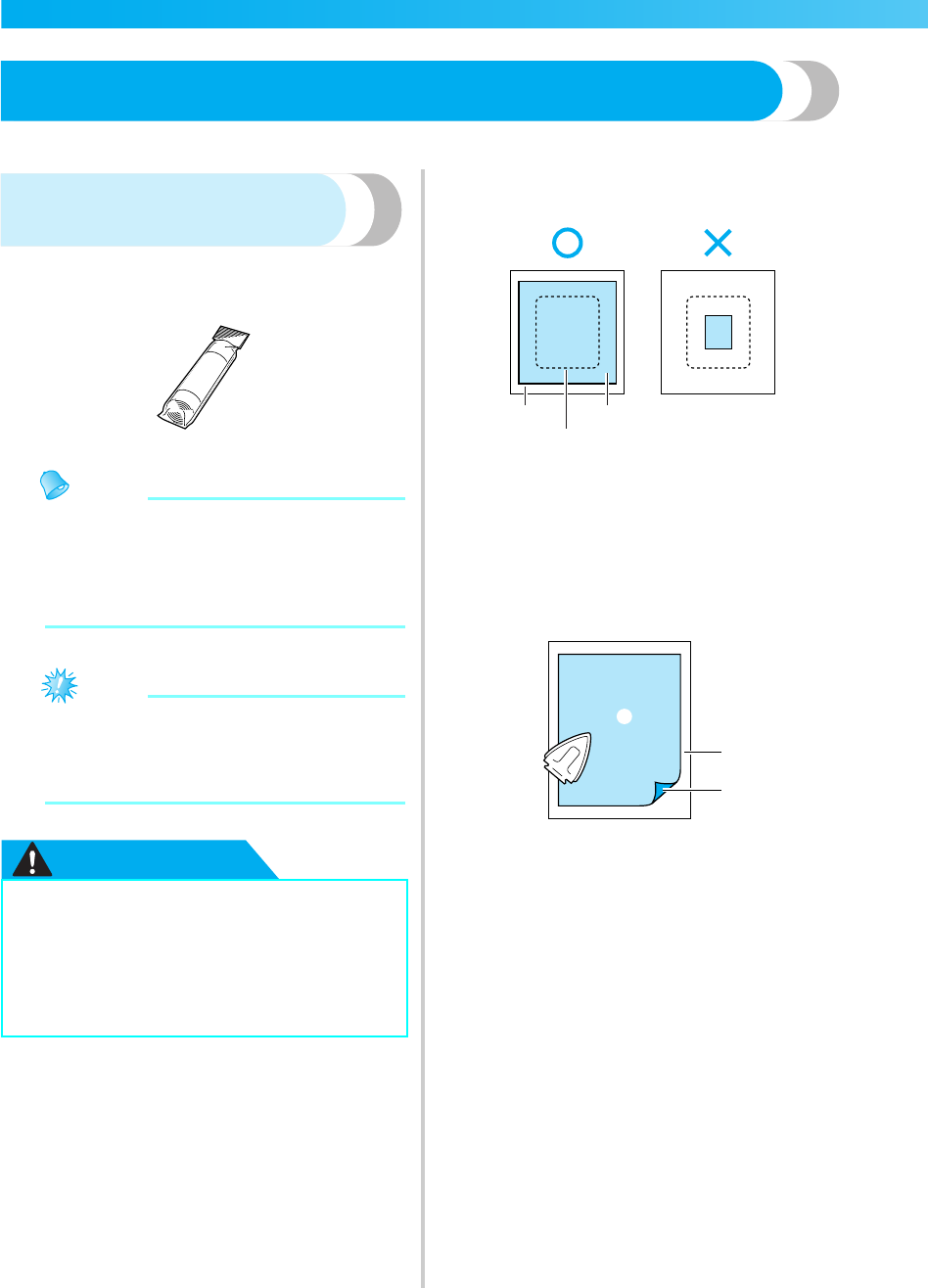
42
EMBROIDERY — — — — — — — — — — — — — — — — — — — — — — — — — — — — — — — — — — — — — — — — — — — — —
Preparing the Fabric
After attaching a stabilizer material to the embroidery fabric, it is stretched on an embroidery frame.
Attaching a stabilizer material
to the fabric
Attach a stabilizer material for embroidery to the
fabric to prevent poor quality embroidery designs.
Memo
z We recommend the stabilizer material for
embroidery. Use a water soluble stabilizer
on thin materials like organdy and fabrics
with a nap like towels. For details, refer to
“Optional accessories” (page 7).
Note
z Always use stabilizer material for
embroidery with stretch fabrics, thin fabrics,
fabrics with a loose weave and fabrics where
stitches easily contract.
CAUTION
a
Prepare stabilizer material that is larger than
the embroidery frame being used.
a Fabric
b Size of embroidery frame
c Stabilizer material
b
If you are using stabilizers with adhesive, place
the adhesive surface of the stabilizer material
against the wrong side of the fabric, and iron it
with a steam iron.
a Stabilizer material
b Fabric (wrong side)
c Attached surface
When it cannot be ironed or placed in the
hoop.
For fabrics, such as towels, which cannot be
ironed or for embroidering in places where
ironing is difficult, place the stabilizer
material under the fabric, and stretch the
fabric in the embroidery frame without
attaching the stabilizer.
● Always use stabilizer material for
embroidery projects. The needle may
break or bend if you embroider without
using a stabilizer material for thin fabrics
or stretch fabrics. Furthermore, the
pattern may not turn out correctly.
2
3
1
2
3
1


















